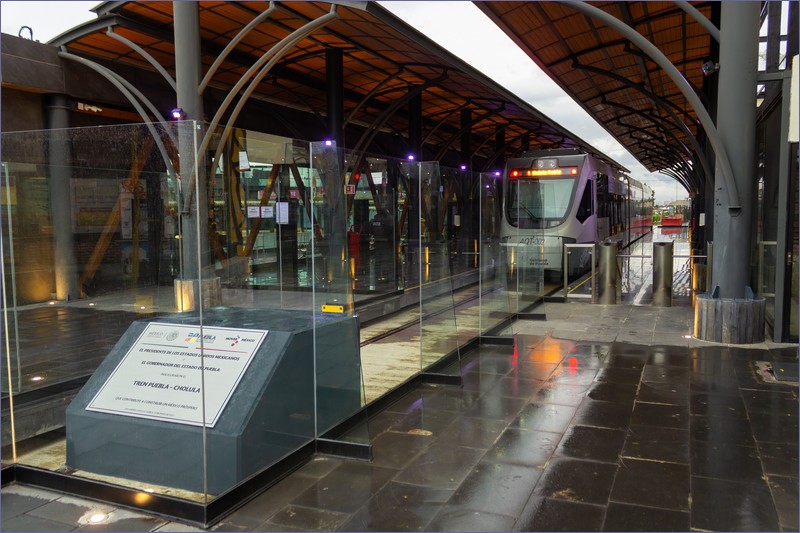Mexiko is a vast country with Mexico a well-developed railway network, however, freight-oriented. For many years train travel in Mexico was limited to tourist trains, suburban and urban trains in Mexico City and light railways. In December 2023 the first section of the Tren Maya project was inaugurated. In the coming years, further sections of the railway network will be launched on the Yucatan Peninsula, which should boost tourist industry in the region.
There are no passenger trains between Mexico and the United States, but tram-train system from San Diego ends 300 meters from the border crossing.
Last updated: 22.01.2024
The first railway in Mexico was opened 1850 between Veracruz and El Molino (11,5 km).
In 1903 the N de M company was created, a few decades later renamed to Ferrocarriles Nacionales de México. In 1938 the company was fully nationalized.
In 1987 President Miguel de la Madrid merged the country’s five regional rail operators into the parastatal Ferronales/Ferrocarriles Nacionales de México.
Due to financial difficulties Ferrocarriles Nacionales de México suspended passenger rail service in 1997. Following year the company was divided into for separate companies: Kansas City Southern de Mexico, Ferromex, Ferrosur, and Ferrocarril y Terminal del Valle de México (Ferrovalle).
In Mexico’s railway heyday, there were some very popular long-distance trains running in Mexico, for example:
El Azteca: Mexico City – El Paso, Texas
El Tapatío: Mexico City – Guadalajara
La Estrella del Sur: Mexico City – Oaxaca de Juárez
El Nocturno: Mexico City – Uruapan
Train travel in Mexico – Tren Maya
In 2023, the first section of the railway network on the Yucatan Peninsula, known as Tren Maya, was put into operation.
The controversial Tren Maya project involves the construction of a 1,550-kilometer railway line (actually two lines) in northeastern Mexico, of which 650 kilometers will be electrified. The lines will be built in eight stages, the first stage was opened in December 2023.
The new lines will be intended for long-distance trains and will connect the popular city of Cancun with Palenque. The first section (Palenque – Escarcega) is 220 kilometers long; construction started in 2020. The railway lines will cut through the jungle, causing environmental organizations around the world to protest against their construction.
There are three types of trains on the routes:
Xiinbal – scheduled, local and long-distance train composed of carriages with panoramic windows.
Janal – train with dining cars; intended mainly for charters. Passengers will have an opportunity to taste regional cuisine. The equivalent of the “culinary trains” or “dinner trains” well known from the United States and Great Britain.
P’atal – a long-distance train with sleeping cars.
The trains will be manufactured by Alstom in Mexico. The maximum speed on the route is 160 km/h. The exterior design of the carriages is inspired by Mayan culture.
Tren Maya – official website
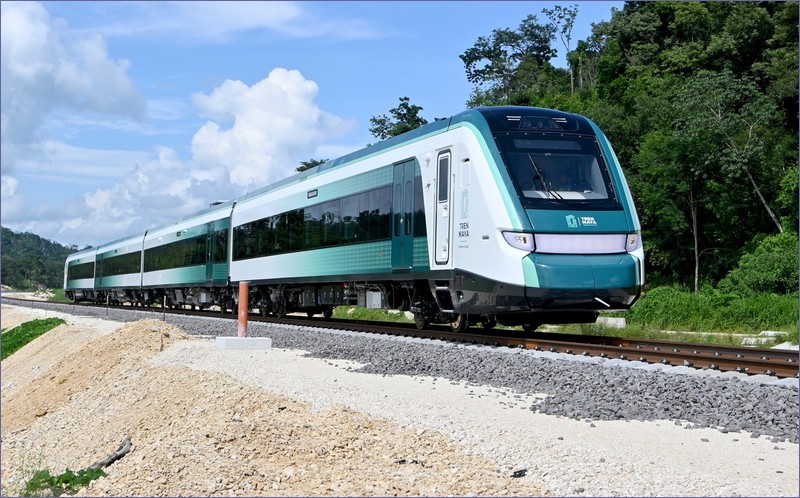
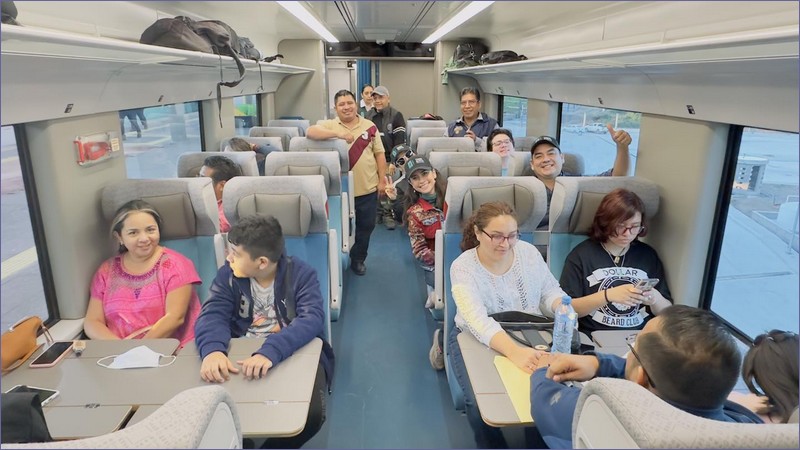
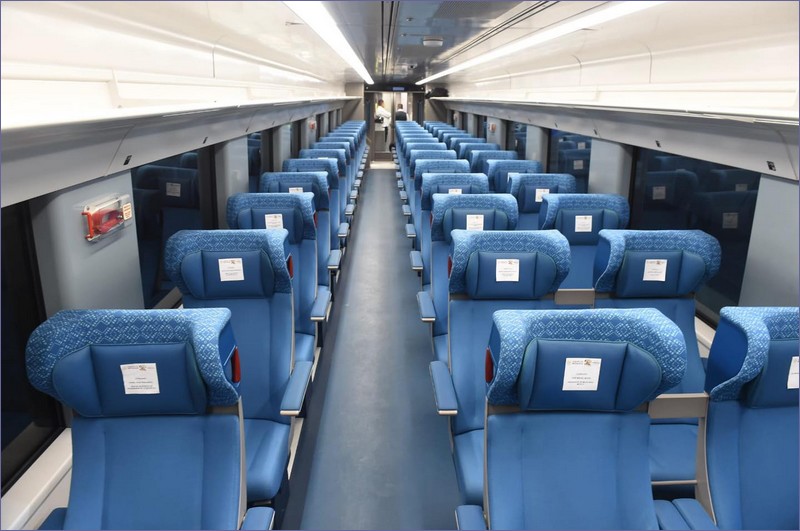
El Chepe train
The most famous Mexican passenger train is the “El Chepe” train, which runs on one of the most beautiful railway lines in the world through the Copper Canyon. In recent years, the train route has been significantly shortened. There are two separate trains running as the El Chepe train – a tourist train and a regional train. The regional train stops at many stations and travels much slower.
The train runs on part of a 673-kilometer line along which 86 tunnels and 37 bridges were built. Trains currently run from Los Mochis, Sinaloa, to Creel, Chihuaha. The distance between stations is approximately 350 kilometers; a tourist train (Express) covers this route in over 9 hours. There is a dining car on board. The most important place on the route is the Dividasero viewpoint, from where you can see the panorama of the canyon very well.
The tourist train also includes an observation car (panoramic). According to the manager, the trains are composed of wagons modernized in 1998.
El Chepe train – official website
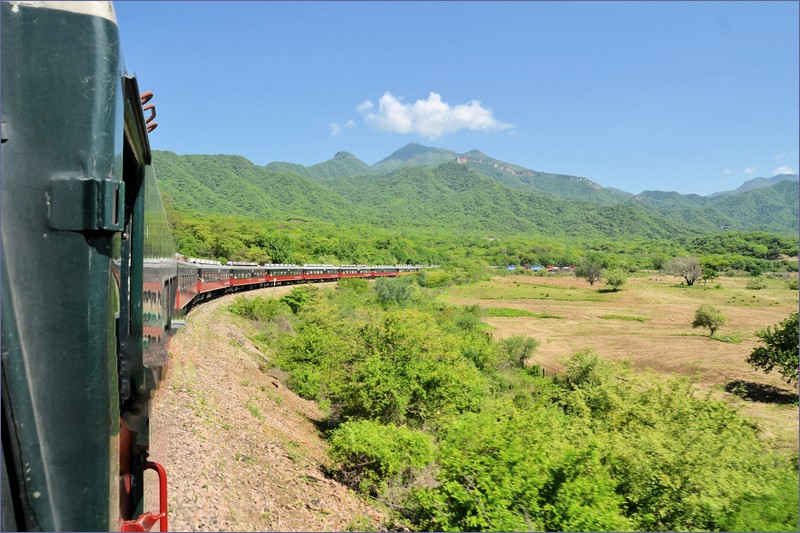
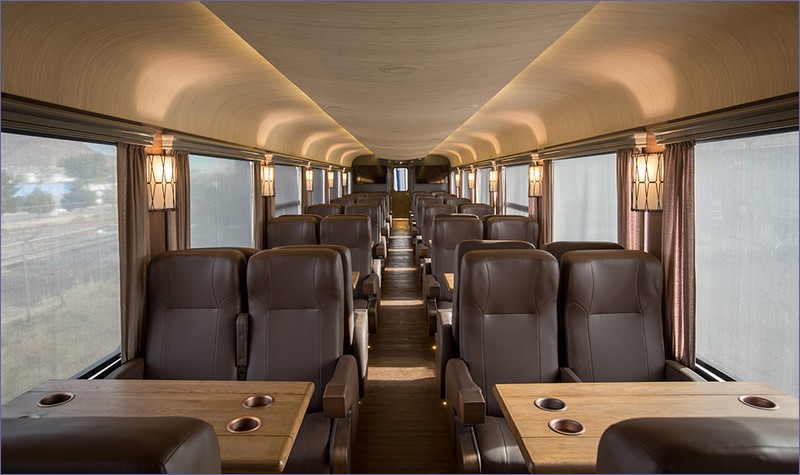
National Railway Museum in Puebla
The history of railways in Mexico dates back to 1850, when the first railway line from Veracruz to El Molino (11.5 km) was put into operation. The first real line connected Veracruz with Mexico City and was opened on January 1, 1873. The preserved building of the former station in Veracruz commemorates these lines, while the history of Mexican railways can be learned at the National Railway Museum in Puebla.
The museum was opened on May 5, 1988 and is basically divided into two parts – an outdoor exhibition of rolling stock and an exhibition of objects and documents related to the heritage of the railways in Mexico.
The museum is located in an old railway station; admission is relatively inexpensive.
This is a huge attraction for the inhabitants of Mexico.
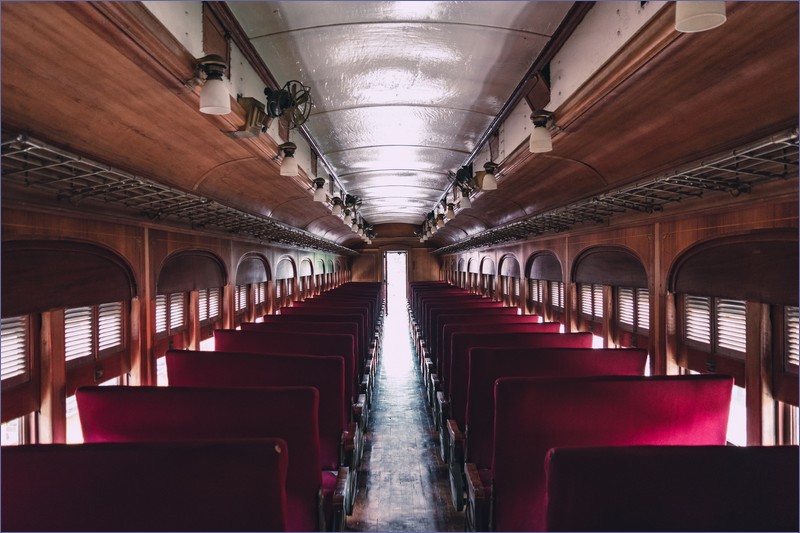
Guanajato Funicular
Mexico currently has one funicular operation, opened in 2001 in the city of Guanajuato near Guadalajara. The funicular route leads from the theater in the city center to a viewing point on a hill overlooking the city.
The distance between the stations is 102 meters, slope 30%. The line is served by two carriages, each of which can accommodate 5 people. The ride takes a few minutes. The upper station is located next to a well-known hotel. Hotel guests can use the funicular for free, others must pay. The railway is not adapted to serve disabled people.
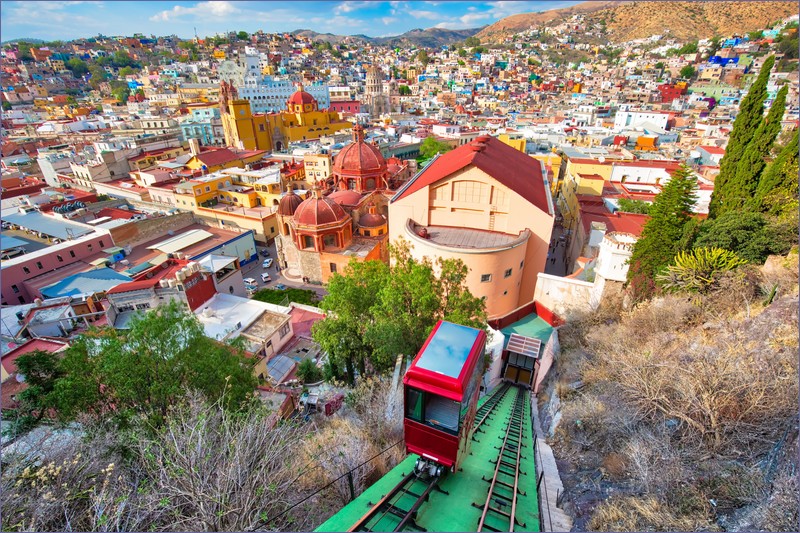
Ferrocarriles Suburbanos
In addition to the metro, there is one agglomeration rail line in Mexico City. Trains run on a 27-kilometer line connecting Fortuna and Cuautitlan stations.
The suburban line was put into operation in 2008. The plan was to build a network of 142 kilometers of railway lines around Mexico City, complementing the metro network. The plans were not implemented; Currently, there is a project of building a new line to the airport in Zumpongo.
Train travel in Mexico – discontinued trains
Just a few years ago, a several tourist trains ran in Mexico. Unfortunately, apart from the “Chepe” train, all of them were ceased. Videos of the trains described can be found on YouTube.
Tram Train Puebla – Cholula – a tram-train system was launched in January 2017. It connected the National Railway Museum in Puebla with the archaeological site in Cholula. For the first two kilometers, the service vehicle moved along the tram line. The distance between the start and end stations was 17.4 km. The average travel speed is 30 km/h. In December 2021, the connection was closed for economic reasons.
Tren Escenico de Cuautla – a train comprised of a steam locomotive and heritage carriages running on the Cuautla-Yecapixtla route. It was ceased at the beginning of the second decade of the 21st century. Even though it was a popular tourist attraction, the authorities don’t plan to resume the service. The local community tried to reinstate the train, but without success.
Tren Turistico Tijuana – Tecate – a tourist train running occasionally between Garcia (Tijuana) and Tecate stations. The photos and videos show a train made of double-decker wagons. The train ride was a tourist attraction not only because of the landscape, but also because of photo stops and visiting the brewery in Tecate with tasting. Before returning, passengers can explore Tecate on their own. The distance between the cities is 92 kilometers. In 2011, the train ran once a month. Another tourist train operated by the Pacific Southwest Railway Museum and Tren de Tecate also runs on part of the route. In 2012, one of the tunnels was destroyed by fire, and transport was suspended for an indefinite period.
Jose Cuervo Express (status uncertain) – luxury Mexican tourist train composed of stylish heritage carriages. It ran on the Guadalajara – Tequila route. The train covered 60 kilometers in two hours. It can carry 395 passengers at a time. After arriving in Tequila, passengers were transported by buses to the oldest distillery in Latin America, where, in addition to sightseeing, they can participate in alcohol tasting.
Tequila Express – a train competing with the “Jose Cuervo Express” described above. It ran on Saturdays and Sundays from Guadalajara to Amatitan. He covered a distance of 40 kilometers in one and a half hours. The train was composed of refurbished wagons.
Sierra Madre Express – a luxury excursion train that ran from Tucson, United States, to Creel, Mexico. The train ran occasionally and the trip lasted about eight days. Passengers spent some of the night on the train, some in hotels. Part of the route led through Copper Canyon and was partially covered with the route of the “Chepe” train. The train was ceased in 2009.
See also:
Railways in Americas by country
